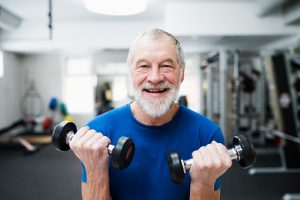
Stacy Schroder of the Masonic Village at Elizabethtown explained, “Research shows that, even into your late 80s, your body still has the potential to build muscle mass.”
Seniors are at a higher risk for falls, which can have detrimental effects in the long run for an older person. On the other hand, maintaining muscle can reduce the risk of falls, which can improve a person’s well-being, ensuring they stay independent. Furthermore, building more muscle promotes fat burning, which helps maintain a healthy weight and wards off weight-related problems.
Many older adults may be wary of embarking on an exercise routine, as they feel they are just too old to be taking on weight training and exercise. They may also have a greater fear or injury, which can deter them from exercising. But seniors shouldn’t be scared or turned-off from exercise, as it can be done at all levels and gradually built up over time as the person improves.
Start off slow
It’s recommended seniors ease into a new routine and preferably work with a trainer or physiotherapist to learn proper techniques and develop a routine.
Over time, as strength builds up, the use of resistance bands and light weights can be integrated into a person’s routine.
Exercise doesn’t have to be strenuous or intense, it can be as simple as improving one’s flexibility or even working on balance. Even these exercises are enough to build strength, improve function, and cause you to sweat.
Another large contributing factor to building muscle is eating the right foods. It is well known that seniors eat less than other age groups, particularly, they consume less protein, which is necessary for muscle repairing and muscle building. Ensuring then that you are consuming at least three meals a day that contains protein is an essential part of muscle-building alongside your regular workout routine.
Related: 4 ways to prevent muscle loss as you age